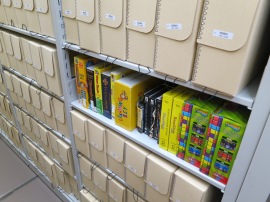Matthew G. Kirschenbaum
University of MarylandArchive for dh
Cluster of Recent Work on Software Preservation
Those who follow my work will know that I’ve been focused for a while on issues around the preservation and scholarly investigation of a variety of different kinds of born-digital materials, from electronic manuscripts to video games and virtual worlds. I’ve tried to be a bridge between the professional practitioners in the archives community and conversations ranging from digital forensics to media archaeology and textual scholarship. Recently, I’ve found myself engaged specifically with the problem of software as a class of born-digital materials: executable content. There’s been a rise in the level of community engagement around this topic, and some even more exciting developments are in the works. Here, however, I’ve grouped my contributions to this emerging discussion.
Last May, the Library of Congress sponsored a two-day meeting called Preserving.exe, dedicated to jumpstarting a national strategy around executable content. I reported on the meeting for Slate magazine in a piece called “History.exe“; my editor then asked me if I would be willing to put myself out there with my own “Top 10” pieces of software I thought deserved long-term preservation, which I did: “The 10 Most Influential Software Programs of All Time.” The comments are the best part (really: my list was merely a pretense and catalyst for discussion, and, as expected, there are some awfully good suggestions in there). The official report from the Preserving.exe meeting is now out (PDF), and contains essays by Henry Lowood, Alice Allen, Peter Tueben, and myself. My piece, entitled “An Executable Past: The Case for a National Software Registry” (pages 12-22) offers a rationale for such an effort modeled (albeit with some crucial distinctions) on the well-publicized activities of the National Film Registry.
Back in September, Rhizome hosted a panel discussion at the New Museum on “Born-Digital Conservation in the Computer Age” featuring myself, Lori Emerson, and pioneering video and computer graphics artist Lilian Schwartz. We had a wide-ranging discussion, ably steered by Ben Fino-Radin (video of the event was recorded but is not currently available). Meanwhile, text of my remarks at the Library of Congress’s Electronic Literature Showcase last April is just downstream here: “Confessions of an Incunk.” In them I focus on electronic literature as software and executable content.
Finally, a long essay entitled “The .txtual Condition: Digital Humanities, Born-Digital Archives, and the Future Literary” is now out in Digital Humanities Quarterly. Among other things, the piece offers an intervention in the OAIS reference model by way of Wolfgang Ernst and media archaeology.
